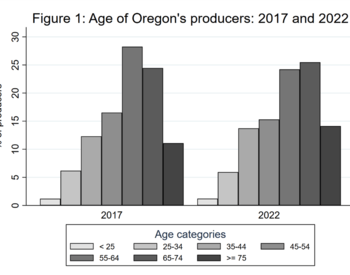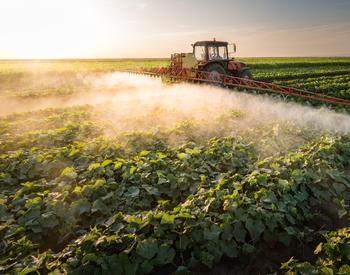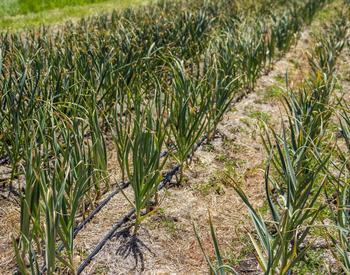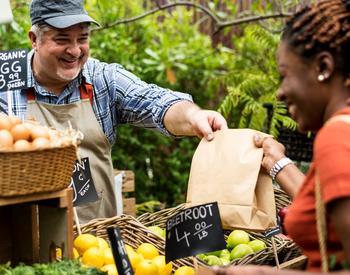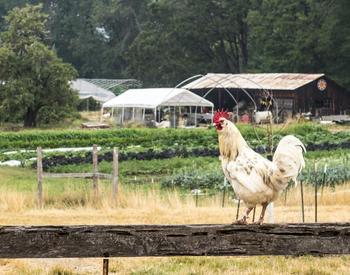Many Oregon fruit and vegetable producers have had a hard time finding sufficient labor in recent years and have seen costs increase significantly. A recent publication of the U.S. Department of Agriculture’s Economic Research Service on the labor challenges facing specialty crop growers includes some data and conclusions that are highly relevant to Oregon farms. The report explores trends in labor costs and import competition, and outlines some strategies being employed by the specialty crop industry in response.
Wages
The wage data cited in the article show that agricultural wages have risen more than three times faster than non-agricultural wages from 2001 to 2019 – 16% vs. 5% after being adjusted for inflation. Minimum wages have been increasing in many states, and Oregon has the fifth-highest minimum wage in the country. Furthermore, the phase-in of recent Oregon House Bill 4002, which requires employers to pay overtime to agricultural workers after they work 55 hours in one work week, will likely increase the labor costs of Oregon farmers.
The solutions cited in the USDA-ERS article include:
- Investing more in automation.
- Relying more on H2A labor.
- Substituting away from labor-intensive crops.
- Expanding their own production operations for many large produce companies into Mexico or other Latin American countries.
These strategies are generally more accessible to larger, well-capitalized firms, and contribute to upward pressure on the average size of commercial farms. The H2A program authorizes the lawful admission into the United States of temporary, non-immigrant workers to perform agricultural labor or services of a temporary or seasonal nature. The program is supplying an increasing share of farm labor but can be difficult to navigate and requires the employer to find qualified workers in their home countries and supply housing once they arrive.
Imports vs. production
Perhaps the most striking piece of information from this USDA-ERS report is the degree to which imports have increased in the fruit and vegetable category in recent years. Table 1 shows that while domestic production of fruits and vegetables has been stagnant or declined from 2000 – 2019, imports have increased 129% for fresh fruit and 155% for fresh vegetables.
| Unit | Average 2000-2002 | Average 2017-19 | Percent change | ||
|---|---|---|---|---|---|
| Farm value | All fruit and vegetables | Billion dollars | NA | 29.6 | NA |
| All fruit (fresh and processed) | Billion dollars | NA | 16.4 | NA | |
| All vegetables (fresh and processed) | Billion dollars | NA | 13.2 | NA | |
| Acreage (planted) | All fruit (fresh and processed) | 1,000 bearing acres | 3,232 | 2,635 | -18 |
| All vegetables (fresh and processed) | 1,000 acres | 1,716 | 2,664 | 55 | |
| Production | Fresh fruit | Million pounds | 28,299 | 28,451 | 1 |
| Fresh vegetables | Million pounds | 40,156 | 38,052 | -5 | |
| U.S. per capita availability | Fresh fruit | Pounds | 100 | 113 | 13 |
| Fresh vegetables | Pounds | 146 | 153 | 5 | |
| Imports | Fresh fruit | Million pounds | 6,472 | 14,812 | 129 |
| Fresh vegetables | Million pounds | 6,084 | 15,528 | 155 | |
| Exports | Fresh fruit | Million pounds | 6,141 | 6,332 | 3 |
| Fresh vegetables | Million pounds | 6,084 | 15,528 | 155 | |
| Import share of availability (weight) | Fresh fruit | Percent | 23 | 40 | 77 |
| Fresh vegetables | Percent | 14 | 31 | 115 | |
| Export share of production (weight) | Fresh fruit | Percent | 22 | 22 | 3 |
| Fresh vegetables | Percent | 9 | 8 | -11 |
Source: USDA-ERS
The specialty crops with the largest increases in imports seem to be those grown by large U.S. produce companies that manage their own production operations in Mexico. These include lettuce, berries, tomatoes and others.
Focusing on significant Oregon crops, we see that imports as a share of domestic availability has increased significantly since 2000 for blueberries as well as snap beans, broccoli, and cauliflower (Table 2).
| Average 2000-2002 | Average 2017-2019 | Percent change | |
|---|---|---|---|
| Mangoes2 | 100 | 100 | 0 |
| Limes2 3 | 98 | 100 | 2 |
| Pineapples2 | 79 | 100 | 27 |
| Bananas2 | 100 | 100 | 0 |
| Papayas | 83 | 99 | 19 |
| Asparagus | 61 | 98 | 60 |
| Green onions4 | 89 | 93 | 4 |
| Avocados | 36 | 89 | 149 |
| Cucumbers | 44 | 81 | 81 |
| Artichokes5 | 74 | 79 | 6 |
| Kiwi | 73 | 72 | -1 |
| Raspberries | 41 | 68 | 66 |
| Peppers, bell5 | 37 | 66 | 80 |
| Tomatoes | 32 | 61 | 92 |
| Squash | 34 | 61 | 78 |
| Blueberries | 47 | 59 | 26 |
| Eggplant5 | 40 | 58 | 47 |
| Grapes | 48 | 51 | 7 |
| Radishes | 24 | 50 | 113 |
| Garlic5 | 32 | 49 | 52 |
| Honeydew | 26 | 45 | 72 |
| Cantaloupe | 35 | 43 | 25 |
| Tangerines | 23 | 36 | 57 |
| Snap beans | 9 | 35 | 282 |
| Watermelon | 11 | 32 | 181 |
| Plums | 19 | 26 | 38 |
| Broccoli | 7 | 22 | 203 |
| Cauliflower | 4 | 21 | 437 |
| Strawberries | 6 | 18 | 204 |
| Lemons | 8 | 18 | 124 |
| Pears | 20 | 18 | -9 |
| Onions | 11 | 18 | 67 |
| Oranges | 4 | 16 | 333 |
| Carrots | 7 | 14 | 96 |
| Cabbage | 4 | 12 | 189 |
| Peaches and nectarines | 7 | 11 | 63 |
| Celery5 | 4 | 11 | 146 |
| Lettuce, leaf/romaine | 1 | 10 | 629 |
| Grapefruit | 4 | 7 | 94 |
| Cherries | 6 | 7 | 4 |
| Lettuce, head | 1 | 6 | 500 |
| Sweet corn | 2 | 6 | 185 |
| Apples | 8 | 5 | -38 |
| Apricots | 16 | 4 | -72 |
| Spinach | 3 | 4 | 17 |
| Cranberries | 0 | 0 | 0 |
Sources: USDA, Economic Research Service, Fruit and Tree Nuts Yearbook Tables and Vegetable and Pulses Yearbook Tables; and USDA, AMS, Market News.
The import share of the U.S. snap bean market has grown 282% since 2000, and this figure for broccoli is 203% and 437% for cauliflower. Some of the increases reflect fresh-market product imported from warmer climates during Oregon’s offseason, likely putting pressure on Oregon's processed vegetable producers. Crops that can be stored, such as apples and pears, have seen little change in imported product market share.
Summary
There is no doubt that labor cost and availability will continue to be a challenge for Oregon specialty crop growers. There will be continued pressure on Oregon farms to rely more heavily on labor-saving technology and imported labor through the H2A program, either directly or through farm labor contractors. Of course, these solutions aren’t perfect and can be difficult for smaller operations to manage effectively.
For more information on this and related issues, check out OSU's Applied Economics Outreach Blog. Facts and figures above were summarized from a July 2022 USDA Economic Research Service report.
- 1Fruit excludes tree nuts and bananas but includes melons. Vegetables exclude melons, sweet potatoes, mushrooms, and pulse crops. Fresh-cut vegetables are included in the "Fresh vegetables category. These statistics are based on a subset of fruit and vegetable commodities that have adequate data to report production, imports, and exports.
- 2 a b c d When the United States does not produce tropical fruit but does export it, the import share of availability is greater than 100 but is capped at 100 in this table.
- 3The 2000-2002 average is based on only 2000-2001 because data was discontinued.
- 4Green onion statistics come from USDA, Agricultural Marketing Service (AMS). Percent change is based only on domestic shipments and imports, not exports.
- 5 a b c d e Includes both fresh and processed imports.






